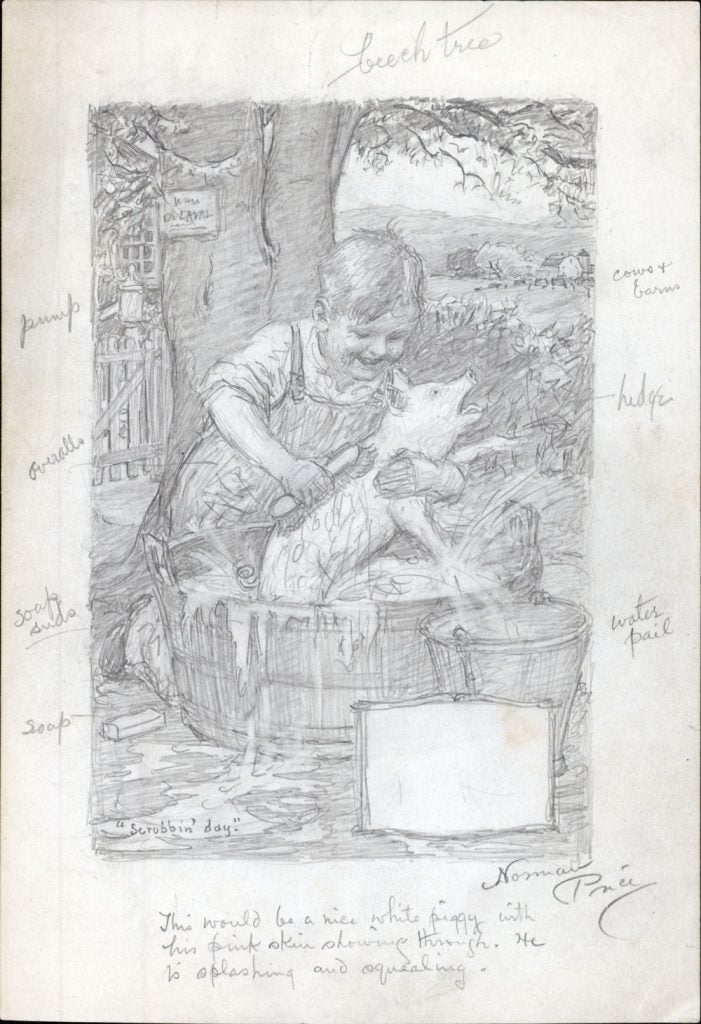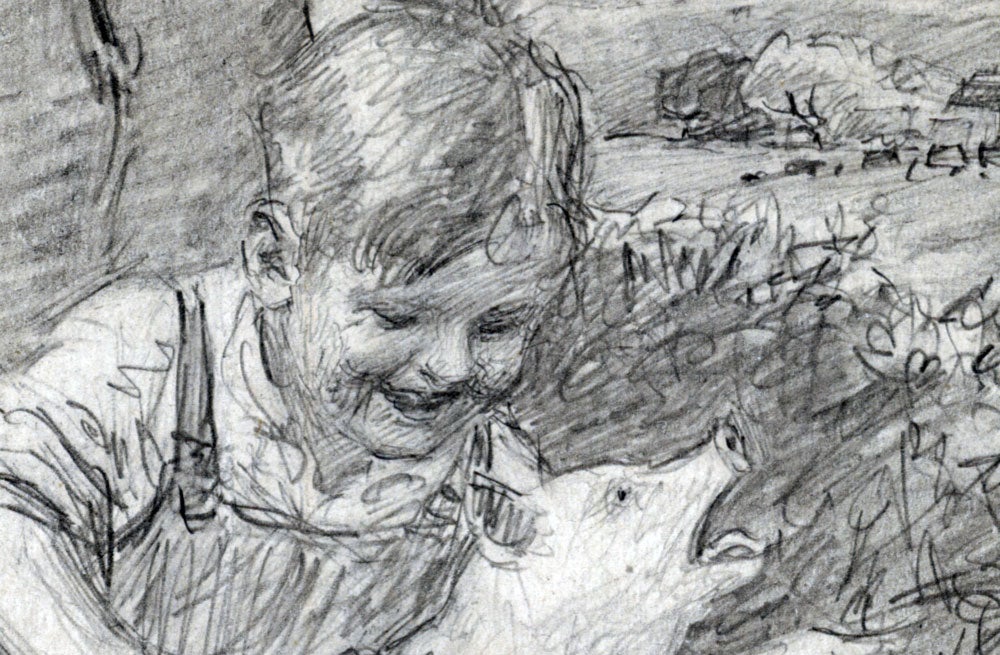

“Amelia Rules, Cerebus Governs (reconsiders?)” (August 12, 2011)
by Jimmy Gownley (1972-) and Dave Sim (1956-)
11 x 17 in., ink on board
Coppola Collection
Gownley is a comic book writer/artist best known for his award winning comic book “Amelia Rules!”
Dave Sim is the writer/artist known for “Cerebus,” the stupendous 300-issue graphic novel, produced and self-published by Sim over a 25 year period.
In 2011, during the run of the YouTube series “CerebusTV,” Gowley and Sim collaborated on a jam piece that was to be auctioned. As it turns out, Gownley is the one who picked up the piece rather than having it go to auction, the value of it having been set (as Jimmy recalls it) by the person who ran CerebusTV. From the episode summaries:
June 17, 2011 (S02E34): Jimmy Gownley’s half of the Cerebus/Amelia Rules! jam piece, Sim compares Jimmy’s roughed-in Cerebus dialogue to his own
August 12, 2011 (S02E40): “Amelia Rules, Cerebus Governs (reconsiders?)” jam print completion announcement
And here it is. A copy of the proof print that it produced in advance of the S/N editions is included as an additional image.





 “Where Was You Going So Hasty?” is the first question for me
“Where Was You Going So Hasty?” is the first question for me

 “Pogo” (May 18, 1955)
“Pogo” (May 18, 1955)
 “Pogo” (May 24, 1962)
“Pogo” (May 24, 1962)


